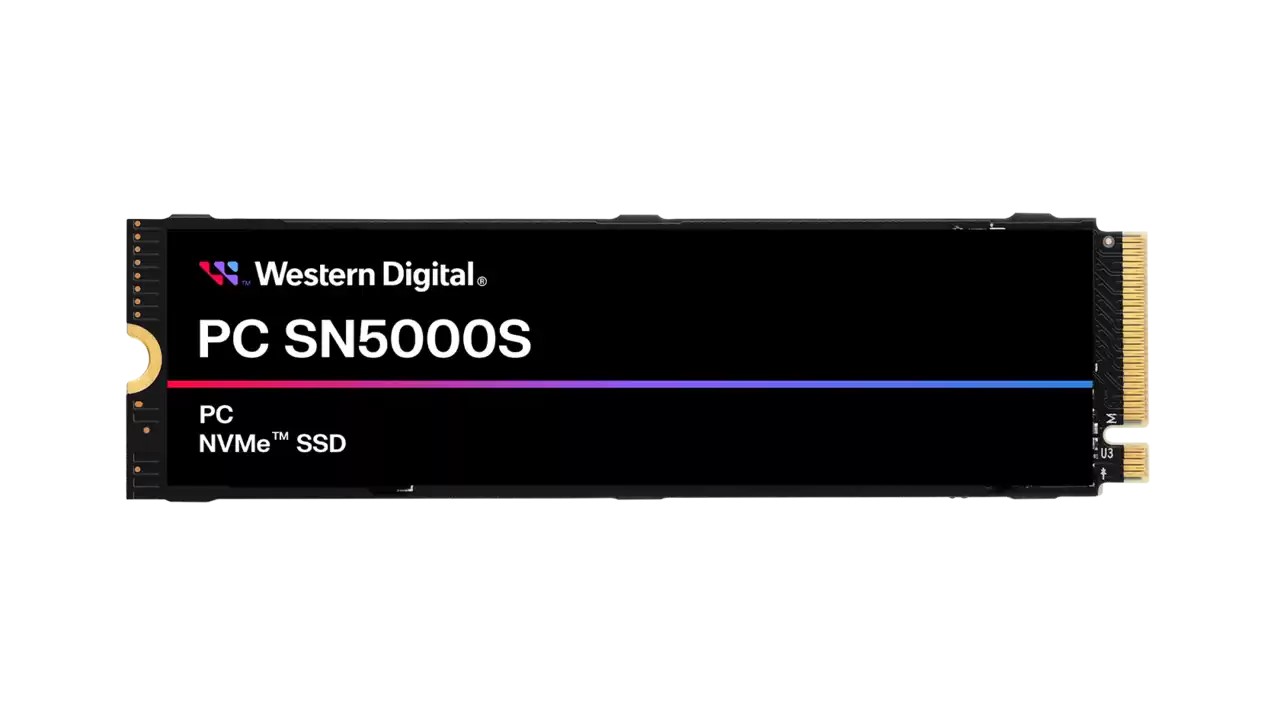
Western Digital's latest SSD with QLC technology boasts better performance in both reads and writes than its TLC-based predecessor (via ComputerBase). The company's newest SN5000S drive, despite using generally slow QLC NAND flash, is 16.5% faster in reads and 15.5% faster in writes compared to the TLC-based SN740.
The PC SN5000S is Western Digital's latest mainstream consumer SSD, available in the M.2 2280 "gumstick" and the small PC-compatible M.2 2230 form factors, with up to 2TB of storage. It essentially replaces the PC SN740 series, which is offered in the same capacities and form factors.
The SN5000S 2TB is 16.5% faster in reads and 15.5% faster in writes compared to the SN740 2TB. The SN740 1TB is slightly faster in writes, and the SN5000S's lead drops to a still respectable 14.3%. The SN5000S 2TB also has an extra 100TB worth of endurance compared to its predecessor, though it is worth noting that the 1TB model of the SN5000S only has 300TBW of endurance to the SN740 1TB's 400TBW. Additionally, the SN5000S uses a little more power at peak than the SN740.
Fundamentally, QLC NAND is in last place when it comes to performance compared to other types of NAND. This is because QLC stores four bits per cell, while other technologies store less. SLC stores one bit per cell, MLC has two, and TLC uses three, with fewer bits generally translating into more performance and endurance. While having more bits increases data density, reading and writing more bits often leads to less performance and more wear and tear on the NAND itself.
However, there are ways to improve the performance of QLC and other multi-bit types of NAND. Perhaps the most crucial method is employing an SLC cache. Although QLC has four bits available to fill, an SSD doesn't necessarily need to fill those bits when writing data. SSDs can perform much better by designating a portion of their cells as pseudo-SLC. Of course, this only works with completely empty cells, and SSDs that use pseudo-SLC need to consolidate data down into fewer cells to make this sustainable.
Despite the issues with QLC (and other multi-bit NAND), storage manufacturers like Samsung are interested in developing it further. Since consumers don't necessarily need the best performance or endurance and generally prioritize having lots of storage, QLC can often be the most cost-effective solution for the mainstream. SLC's low data density makes it more suitable for servers, where the raw performance and high endurance are far more useful.







